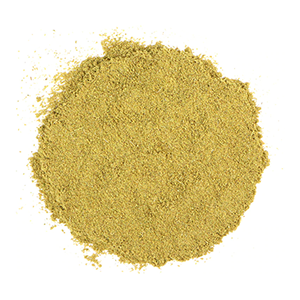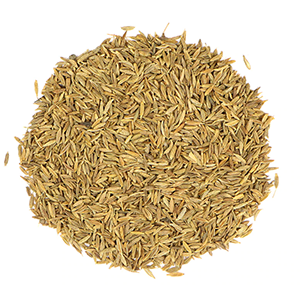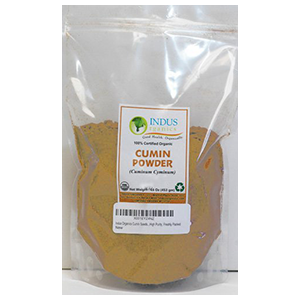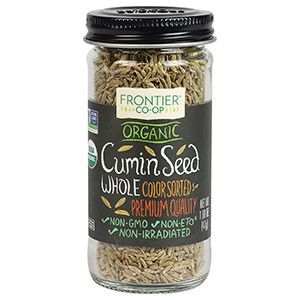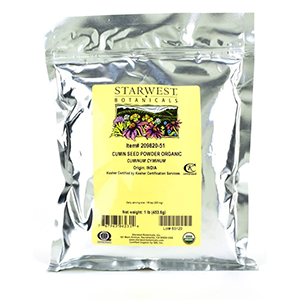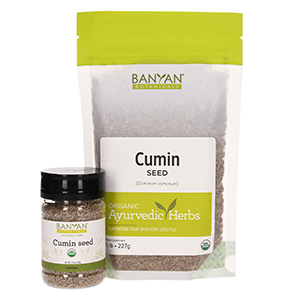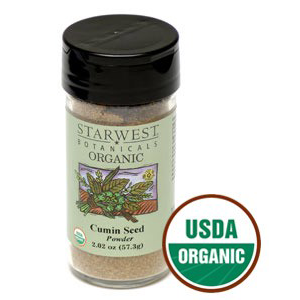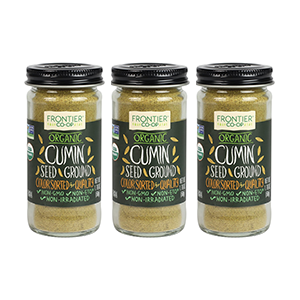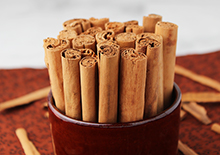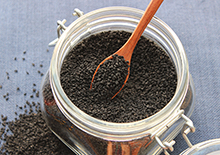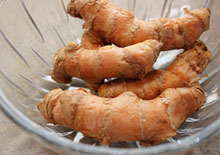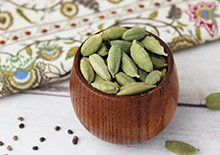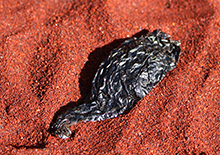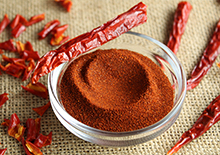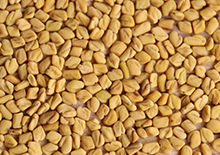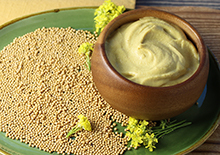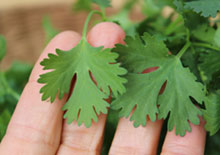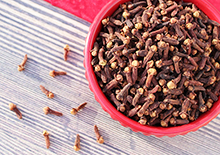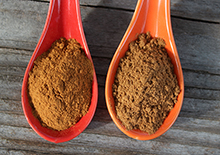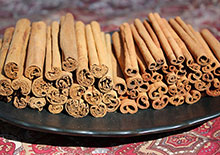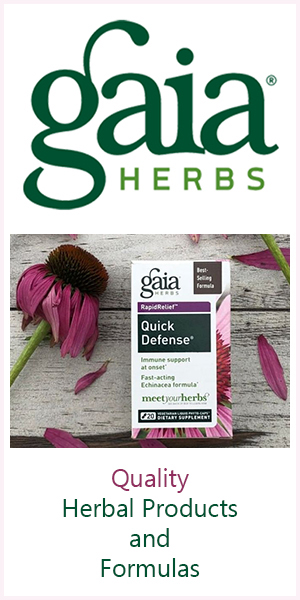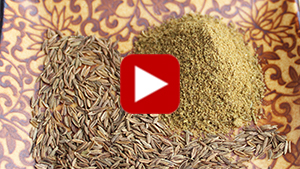- Home
- Herbs and Spices
- Cumin Seeds
Cumin Seeds, Two Unusual Properties of This Common Household Spice
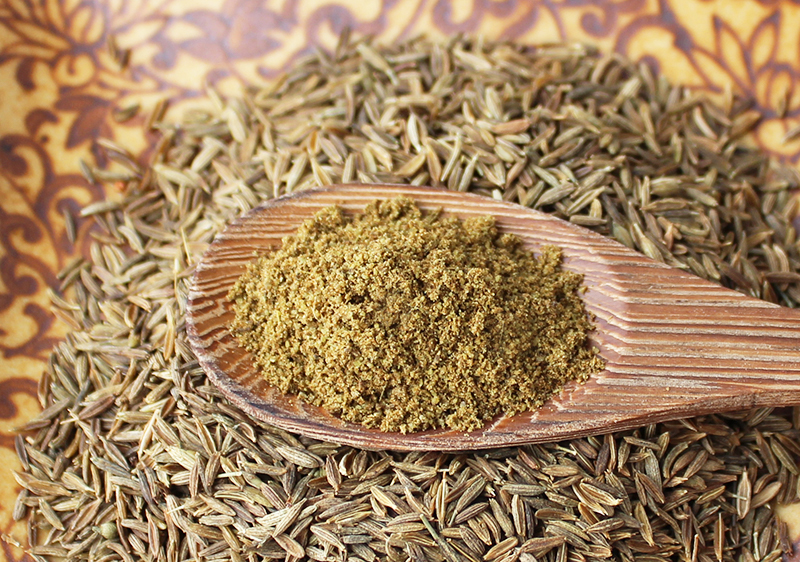
Cumin is a common culinary spice derived from the dried seeds of the Cuminum cyminum species. Not to be confused with black cumin seed (Nigella sativa) of which the trendsetting black seed oil is derived.
The most popular type of cumin seed is sometimes referred to as "green cumin" which is the ground golden-brown powder common to kitchen spice racks around the world. "Black cumin" (Bunium bulbocastanum) is another related type that is primarily utilized in the Middle East.
Table of Contents
What is Cumin? | #1 Unusual Property | #2 Unusual Property | How to Use | Precautions | Shop
The cumin plant comes from the parsley family, which includes both the vegetables celery and carrot, along with other seed spice favorites like caraway, dill, fennel and coriander. Likewise, all of these varieties are umbellifers classified by their umbrella-shaped lacey flowers. When mature, the seed-like fruit of the plant is what we call cumin, which visually looks very similar to caraway seed.
Believed to be native to regions spanning from the Eastern Mediterranean to the subcontinent of India, the use of cumin dates back to cultures of this territory. The spice is well-known for its ancient historical use in Egypt, the Greek Minoan island of Crete as well as Morocco.
Most fresh and high-quality cumin seeds and ground powders are very fragrant with a deeply penetrating pungent somewhat citrusy scent that is not always appreciated. We liken it to the herb cilantro, which can also be one that is sometimes initially off-putting to the senses.
It's cumin's distinct aroma and earthy savory taste complexity however that makes it truly unique from other common household spices. In parts of Greece, ground cumin seed was in fact once a staple tabletop seasoning and is still used in Morocco alongside condiments like salt to add flavor to meals.
Cumin seeds are oblong and upon closer inspection have 8-9 ridged sections with channels that contain oil content. This is evident by the slight oily dense texture when ground as a powder. The smell is due to constituents in the essential oils known as CUMINALDEHYDE and p-CYMENE, also present in black seed oil and the herb thyme.
Ground powders as well as whole seeds are the backbone of many cultural dishes frequently served in Eastern Mediterranean, Indian, Middle Eastern and Mexican cooking.
Cumin is used as an important ingredient in seasonings like curry, chili powder and garam masala to round out these blends and integrate their bouquet of flavors.
What are the benefits of using cumin? Here are two unusual properties that you may not know about.
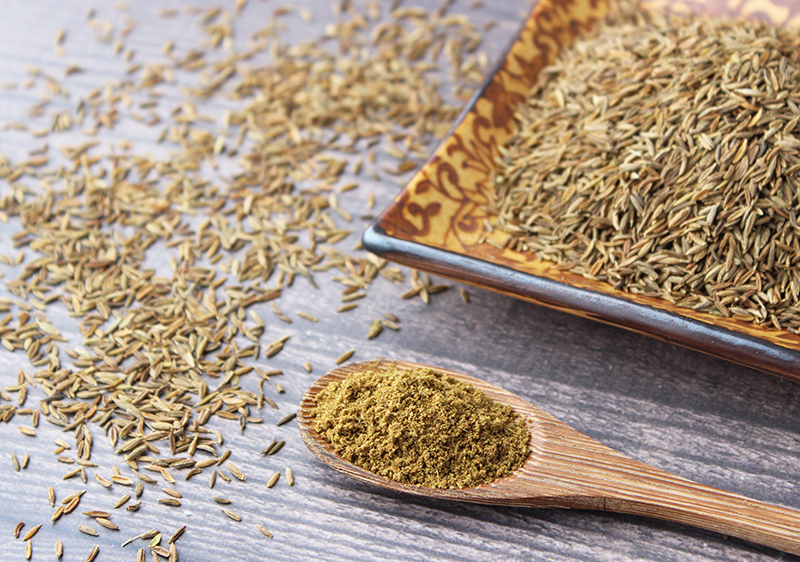
#1 Unusual Property, Cumin Seed is a Cooling Balancing Spice
In India cumin is known as JEERA and has been a common herbal spice utilized in the traditional healing systems of Ayurveda for centuries. It is highly valued for its ability to support healthy digestion acting as a carminative and antispasmodic digestive aid.
From a Western herbalism standpoint, it is also regarded as a stimulant, diuretic, antibacterial, emmenagogue and galactagogue.
There is however one major aspect to cumin that sets it apart from other types of spices.
While cumin can be described to have a "spicy" flavor this is predominantly due to its pungent and slightly bitter taste qualities, not because it's heating to the body.
Cumin is in fact quite the opposite and particularly known for its COOLING ACTIONS, making it especially beneficial for Pitta constitutions or hot conditions that may contribute to inflammation.
In some past research, cumin essential oil was in fact identified to have an anti-inflammatory influence.
When it comes to most herbs and spices, there is only a limited amount of cooling herbs. A handful of others include: coriander, dill weed, fennel, licorice, chrysanthemum, burdock, cilantro, chamomile and peppermint.
Cooling foods and herbal substances, like cumin seeds, can come in handy as a spice seasoning to soothe heat-related issues and provide digestive balance to meals.
Cumin is often used to counterbalance hot spicy seasonings and herbs not only in a culinary sense but also in many types of Ayurvedic preparations. It is frequently used in spiced ghee or clarified butter. Likewise, it is an essential ingredient in the popular digestion formula known as hingvastak to mellow out many of the hot drying spices, like asafoetida, ginger and long pepper.
In Ayurvedic practices, cumin seeds or powders are prepared straight as a type of cooled tea referred to as jeera water. It is frequently served as a cooling drink in hot weather. Because it is known to be higher in potassium, it can also simultaneously help to reduce water retention while maintaining electrolyte balance.
Cumin is blended with other herbs, spices, black salt, lemon juice and usually mango and served as a summertime Indian iced beverage called jaljeera drink. Jaljeera is Hindi which means water (jal) of cumin (jeera or jira).
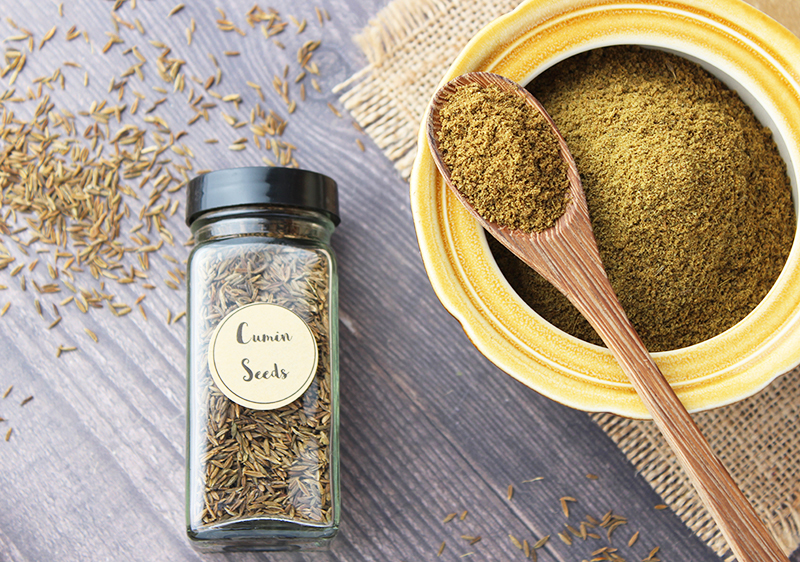
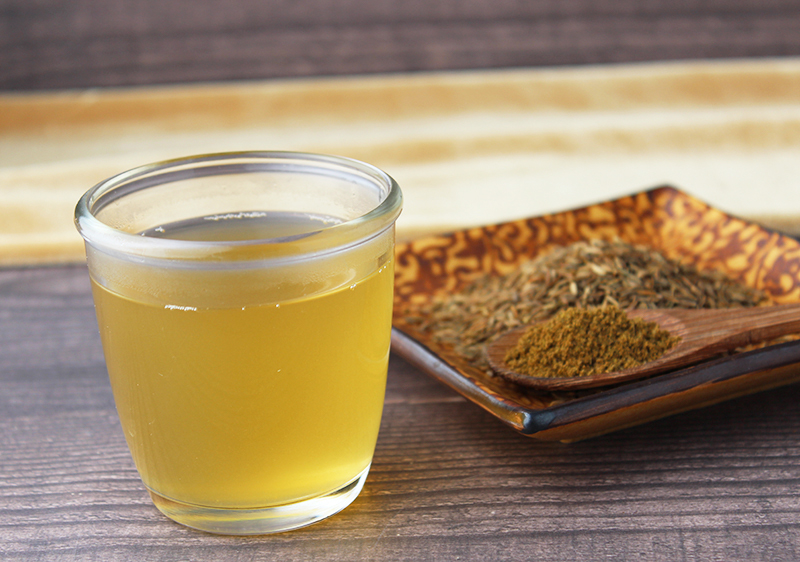
#2 Unusual Property, Cumin Seeds and Jeera Water for Weight Loss and Detox
Another unusual but traditional home use for cumin, especially as jeera water, is to promote weight loss. Along with a health-promoting diet and lifestyle practices, jeera water consumed throughout the day is claimed to assist in weight loss protocols. The simple reason for this is because it encourages better digestion of food, which can help to improve metabolism and the subsequent burning of calories.
To make jeera water: Steep about 1/2 teaspoon of cumin powder or 1 teaspoon of cumin seeds in one cup of hot water for 5 minutes. Strain the cumin and allow to cool or drink as a hot tea. Incidentally, straight cumin tea is quite delicious especially if you happen to enjoy the taste of cumin or it can be infused with fennel or coriander to increase the flavor profile.
While the use of cumin for reducing body weight is still under scientific review, in one small study conducted on 72 overweight subjects, a combination of cumin and lime used over an eight week period was shown to have a "beneficial effect on weight." Likewise, other research has shown that yogurt consumed with cumin powder identified improvements for obese women on a weight reduction diet.
Cumin seed and jeera water are often reported to assist in the body's natural detoxification processes. The mentioned essential oils cuminaldehyde and p-cymene in cumin seeds are also known for their high antimicrobial activity beneficial for a healthy gut microbiome as well as support the eliminating toxins in the GI tract. (*)
Other antioxidants and the main flavonoids apigenin, luteolin and chrysoeriol are also believed to encourage a cleansing influence.
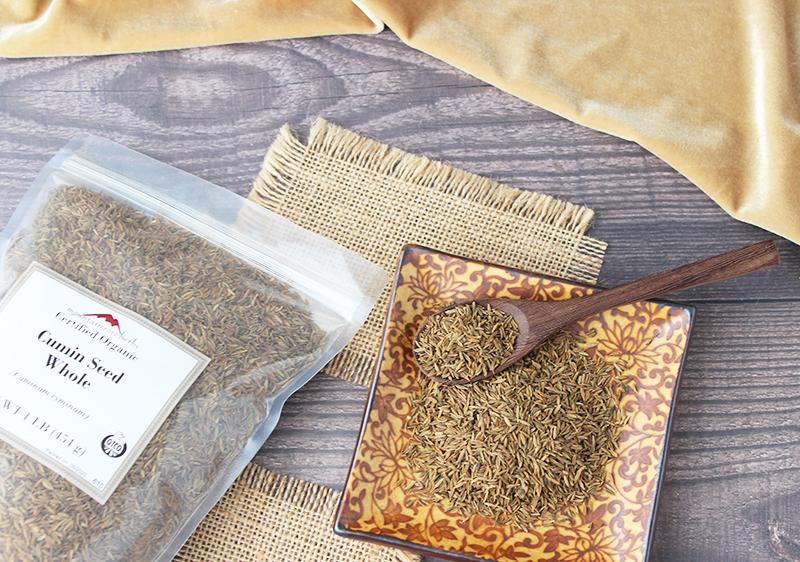 We are an affiliate of Mountain Rose Herbs. All views expressed here, however, are completely our own.
We are an affiliate of Mountain Rose Herbs. All views expressed here, however, are completely our own.How to Use
Because the volatile oils in cumin degrade significantly after seeds are powdered, we recommend grinding cumin seed before use for the highest potential benefits as well as fresh flavor.
There are numerous ways to utilize cumin as a culinary spice in Eastern Mediterranean, Indian, Middle Eastern and Mexican cooking. This includes foods like falafel, aloo gobi, black beans and rice, tacos, ropa vieja, hummus and Mexican mole. It is also a typical spice flavoring in many types of barbecue sauces.
Try using cumin seeds and powders as the only spice in grain and legume dishes as well as soups, stews and for making jeera tea or jeera rice.
Precautions:
It is best to consult with a qualified healthcare practitioner before adding cumin seeds to the diet on a regular basis especially if pregnant, nursing, taking prescribed medications or if you have a medical condition.
Shop Related Products (About Affiliates & Amazon Associate Paid Links)
Affiliate Disclaimer: This section contains affiliate product links. If you make a purchase through our recommended links, we receive a small commission at no additional cost to you. Thanks for the support.


